|
|
Search Resources (32 Results)
 |
|
Outline | Approved: A year ago | 2.17 MB | Comments: 0
...5 kingdoms – animals, plants, fungi, protists,...
...familiar kingdoms of animals, plants, & fungi....
...before plants & animals appeared. Evidence indicates...
...the domestication of animals. Zoonosis is a...
...disease that infects animals but can be...
...be transmitted from animals to humans. Infectious...
...are fed to animals. These antibiotics are...
...started to breed animals & process their...
...more related to animals, plants, & fungi...
...parasites that infect animals or plants. A...
...as well as animals, plants, & fungi....
...grow on dead animals or algae. Saprobic...
...closely related to animals than plants. Fungi...
...in plants & animals. In humans, fungal...
...their diet Unlike animals that ingest food...
...on humans & animals are of much...
...greater significance In animals, the disease is...
...Pathogens Fungi attack animals directly by colonizing...
...Humans & other animals can be poisoned...
...not infect other animals or plants. The...
| N/A |
67
|
Amber Mason Turner
|
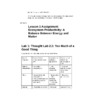 |
|
Report | Approved: 3 years ago | 8.15 kB | Comments: 0
...UVR have on animals ? it can...
...UVR have on animals ? if plants...
| 1
|
136
|
bolbol
|
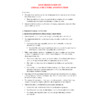 |
|
Lecture Notes | Approved: 6 years ago | 34.6 kB | Comments: 0
...problems that all animals must solve. These...
...how to move. Animals of diverse evolutionary...
...biology’s major themes Animals provide vivid examples...
...comparative study of animals evolved by natural...
...comparative study of animals. Animals also show...
...study of animals. Animals also show a...
...the tissues of animals Life is characterized...
...with emergent properties. Animals are multicellular organisms...
...tissues. In most animals, combinations of various...
...tissue in most animals, and muscle contraction...
...work in active animals. There are three...
...but the simplest animals (sponges and some...
...functions of most animals. Each organ system...
...cell size. Multicellular animals are composed of...
...internal organization. Most animals are more complex...
...a problem for animals whose cells are...
...recognized that many animals tend to maintain...
...homeostatic mechanisms in animals operate on this...
...is expensive and animals use a considerable...
...the Bioenergetics of Animals 1. Animals are...
...of Animals 1. Animals are heterotrophs that...
...fuel. In contrast, animals are heterotrophs and...
...rates at which animals use chemical energy...
...that records the animals heat loss. A...
...“strategies” used by animals. Birds and mammals...
...size among similar animals One of animal...
...inverse relationship. 4. Animals adjust their metabolic...
...rates measured when animals are performing a...
...For most terrestrial animals, the average daily...
...budgets reveal how animals use energy and...
...Different species of animals use the energy...
...ectothermy. For most animals, the majority of...
| N/A |
271
|
johaneswijaya
|
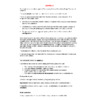 |
|
Lecture Notes | Approved: 6 years ago | 101.77 kB | Comments: 0
...ANIMALS Six Kingdoms are...
...3rd. Edition, 1998. Animals are heterotrophic, diploid,...
...is unique to animals. The gametes of...
...The gametes of animals, eggs and sperms,...
...THE ARCHITECTURE OF ANIMALS. Four features are...
...body plan of animals: The number of...
...parts. All triploblastic animals have bilateral symmetry,...
...possible. Body cavity Animals may be... Acoelomate:...
...in coelomates. Coelomate animals are bilaterally symmetrical,...
...vast majority of animals are protostomes, e....
...tactics observed in animals can be divided...
...carcasses of dead animals are but a...
...many groups of animals round worms, segmented...
...includes protozoans and animals that feed on...
...bacteria and algae. Animals that eat plant...
...kill and eat animals. Types of predation:...
...Chordates are coelomate animals with bilateral symmetry,...
...energy production in animals depends on aerobic...
...area of small animals means that they...
...e. g. large animals have larger bones...
...bones than small animals, but their bones...
...for achieving homeostasis. Animals have an optimal...
...a good insulator. Animals have developed methods...
...groups of aquatic animals and mammals and...
...ELECTROLYTE BALANCE IN ANIMALS Maintaining water balance...
...solutes in many animals are Na+, K+,...
...of water. Land animals... Land animals constantly...
...Land animals... Land animals constantly lose water...
...must secreted. Land animals... Land animals gain...
...Land animals... Land animals gain electrolytes in...
...the time, land animals must conserve or...
...is widespread in animals. Marine birds and...
...waste excrete by animals is correlated to...
...has to endure. Animals living in dry...
...repair of tissues. Animals need to general...
...egestion in simple animals or elimination in...
...in more complex animals. MOUTH Mechanical digestion...
...the gills. Aquatic animals spend 20% of...
...energy while terrestrial animals spend 1 -2...
...system In all animals fluid between the...
...ELECTROCAL SIGNALS IN ANIMALS The ability of...
...pitch. PHOTORECEPTORS Most animals have photoreceptors that...
...the female. Some animals are hermaphrodites and...
...common among aquatic animals. Gametes from both...
...IMMUNE SYSTEM IN ANIMALS Disease-causing microorganisms are...
| N/A |
237
|
johaneswijaya
|
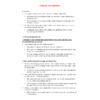 |
|
Lecture Notes | Approved: 6 years ago | 39.7 kB | Comments: 0
...As a group, animals exhibit a great...
...Nutritional Requirements 1. Animals are heterotrophs that...
...organic raw materials animals use in biosynthesis...
...substances that the animals cannot make for...
...budget of most animals. ATP powers basal...
...and, in endothermic animals, temperature regulation. Nearly...
...digestion of proteins), animals can fabricate a...
...essential for all animals, but others are...
...for most other animals. An animal whose...
...to be malnourished. Animals require 20 amino...
...make proteins. Most animals can synthesize half...
...essential for most animals. A diet that...
...The proteins in animals products, such as...
...is retarded. Some animals have special adaptations...
...during molting. While animals can synthesize most...
...and fatty acids animals need. While vitamins...
...Mechanisms 1. Most animals are opportunistic feeders...
...opportunistic feeders All animals eat other organisms—dead...
...parasites). In general, animals fit into one...
...snakes, eat other animals. Omnivores, such as...
...usually eats, most animals are opportunistic, eating...
...occasionally eat small animals or bird eggs....
...they eat. All animals consume bacteria along...
...have evolved among animals The mechanisms by...
...mechanisms by which animals ingest food are...
...groups. Many aquatic animals, such as clams,...
...whales, the largest animals ever to live,...
...millions of small animals from huge volumes...
...suck blood from animals. Aphids tap the...
...obtain nectar. Most animals are bulk-feeders that...
...even be toxic. Animals cannot use macromolecules...
...eliminated. In most animals, at least some...
...digested intracellularly. Many animals with simple body...
...and flatworms, most animals have complete digestive...
...a diversity of animals, including the mammalian...
...diet of herbivorous animals is contained in...
...cell walls. However, animals do not produce...
| N/A |
146
|
johaneswijaya
|
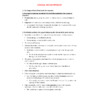 |
|
Lecture Notes | Approved: 6 years ago | 25.3 kB | Comments: 0
...for mammals, most animals have both eggs...
...pole. In some animals, the animal pole...
...meroblastic cleavage. In animals with less yolk...
...and Differentiation in Animals 1. Morphogenesis in...
...1. Morphogenesis in animals involves specific changes...
...relative to the animals body axes. Limb...
| N/A |
175
|
johaneswijaya
|
 |
|
Lecture Notes | Approved: 6 years ago | 31.52 kB | Comments: 0
Category: Botany | Downloaded: 0
...seed plants to animals, specifically to humans....
...by wind or animals. 3. Pollen eliminated...
...by wind or animals until pollination occurs...
...eras. The terrestrial animals of the Mesozoic,...
...insects and other animals transfer pollen from...
...are pollinated by animals. They typically lack...
...Many angiosperms use animals to carry seeds....
...are eaten by animals when ripe and...
...by wind or animals, a seed germinates...
...6. Angiosperms and animals have shaped one...
...colonized the land, animals have influenced the...
...The fact that animals must eat affects...
...selection of both animals and plants. Natural...
...of hungry ground animals. In turn, this...
...general connection between animals and plants. Like...
...for their domesticated animals. We also grow...
...decoration. Like other animals, early humans probably...
...species and the animals that depend on...
| N/A |
291
|
johaneswijaya
|
 |
|
Lecture Notes | Approved: 6 years ago | 27.3 kB | Comments: 0
...other organisms. Early animals populated the seas,...
...life history define animals While there are...
...definition. • (1) Animals are multicellular, heterotrophic...
...multicellular bodies of animals are held together...
...together. • (3) Animals have two unique...
...• (4) Most animals reproduce sexually, with...
...outer layer. Some animals develop directly through...
...called homeoboxes. Only animals possess genes that...
...in function. All animals, from sponges to...
...trace all the animals lineages back to...
...the origin of animals from a flagellated...
...35 phyla of animals. For the past...
...phylogenetic tree of animals with the remodeled...
...phylogenetic tree of animals is based mainly...
...shared by the animals belonging to that...
...lifestyle. Many radial animals are sessile or...
...from all sides. Animals that move actively...
...phylogenetic tree of animals Modern phylogenetic systematics...
...phylogenetic tree of animals is based on...
...phyla) refers to animals that secrete external...
...is problematic. These animals have a lophophore,...
...appearance of multicellular animals is found in...
...includes the first animals with hard, mineralized...
...to typical marine animals today. Some of...
...of geologic time, animals diversified so rapidly...
...the diversification of animals. • (1) Ecological...
...the diversification of animals was associated with...
...branches of bilateral animals—Lophotrochozoa, Ecdysozoa, and Deuterostomia—the...
| N/A |
141
|
johaneswijaya
|
 |
|
Lecture Notes | Approved: 6 years ago | 37.61 kB | Comments: 0
...of all living animals are invertebrates, animals...
...animals are invertebrates, animals without backbone. The...
...most of the animals we are familiar...
...with are vertebrates, animals with backbone. This...
...extant species of animals. PARAZOA The subkingdom...
...RADIATA These are animals that have radial...
...BILATERIA These are animals with bilateral symmetry...
...for attachment. Pseudocoelomate animals. The pseudocoelom is...
...colonial and sessile animals surrounded by a...
...brachiopods are marine animals. They evolved early...
...are benthic marine animals, although there are...
...or chitons. Marine animals with segmented shells...
...freshwater and terrestrial animals with body and...
...Marine and freshwater animals with a two-part...
...Marine and predatory animals with the foot...
...separate. Mostly marine animals; about 10,000 species....
...successful group of animals. There are about...
...coelom. Free moving animals. Locomotion by tube...
| N/A |
128
|
johaneswijaya
|
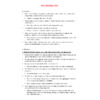 |
|
Lecture Notes | Approved: 6 years ago | 48.2 kB | Comments: 0
...extant species of animals are known, and...
...by future biologists. Animals are grouped into...
...about 35 phyla. Animals inhabit nearly all...
...where the first animals probably arose. Terrestrial...
...special problems for animals. Only the vertebrates...
...of vertebrates, the animals with backbones, which...
...Most of the animals inhabiting a tide...
...are invertebrates, the animals without backbones. A....
...Sponges are sessile animals that lack nerves...
...B. Radiata All animals except sponges belong...
...the Eumetazoa, the animals with true tissues....
...is the Radiata, animals with radial symmetry...
...anemones, and coral animals) have a relatively...
...first in triploblastic animals. When the animal...
...as polyps. Coral animals live as solitary...
...“comb-bearer” and these animals are named for...
...the original bilateral animals, the urbilateria, were...
...were relatively complex animals with true body...
...of the bilateral animals into the protostomes...
...or on other animals. Many have suckers...
...species, are tiny animals (0.05 to 2...
...as the lophophorate animals, named after a...
...mesoderm. Bryozoans (“moss animals”) are colonial animals...
...animals”) are colonial animals that superficially resemble...
...and numerous sessile animals, with several species...
...Mollusks are soft-bodied animals, but most are...
...Chitons are marine animals with oval shapes...
...into which the animals can retreat if...
...shells of other animals. Clams can pull...
...temporarily to other animals, including humans. Some...
...and tissues of animals. There are 90,000...
...Other species parasitize animals. Over 50 nematode...
...the earliest land animals. Centipedes (class Chilopoda)...
...of insects. Flying animals can escape many...
...that wings allowed animals to glide from...
...numerous of all animals. These small crustaceans...
...present in nonsegmented animals and play an...
...diversity of complex animals to evolve. Body...
...and chordates. Segmented animals occur in all...
...also includes nonsegmented animals. Three hypotheses can...
...vertebrates. However, these animals share the deuterostome...
...sessile, or slow-moving animals. The internal and...
...subphyla of invertebrate animals plus the subphylum...
...subphylum Vertebrata, the animals with backbones. Both...
| N/A |
122
|
johaneswijaya
|
|
Post your homework questions and get free online help from our incredible volunteers
|